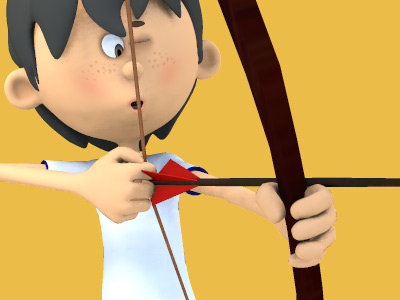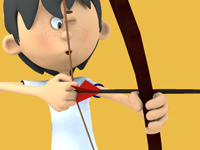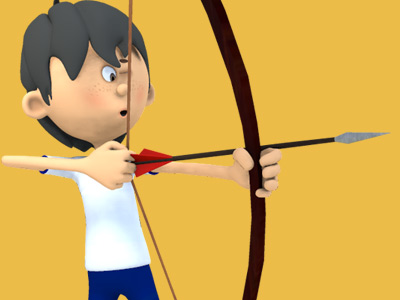Target Archery

Rules of Archery
Archery competitions may be held indoors or outdoors. Indoor rounds are normally shot at one distance, whereas outdoor competitions normally consist of several distances. Since archery involves the use of potentially lethal equipment, much attention is paid to order and safety. Whistle commands are used to signal the different phases of shooting, or an 'end'. Two whistle blasts means archers can approach the shooting line. One whistle blast means archers can begin shooting. The archers are not allowed to collect their arrows whilst other archers are shooting. The signal to collect your arrows is three whistles from the field captain. These rules apply to all forms of target archery. Other rules, or points of etiquette, include:
- The command Fast means stop shooting immediately and return the unshot arrow to the quiver. It is used when the situation becomes suddenly and unexpectedly dangerous.
- Do not distract another archer when they are shooting. If an archer is at full draw, wait before taking your place on the shooting line.
- If an archer damages another archer's arrows (or other equipment), they must offer to pay for any damages.
Metric Rounds (WA rules)
For a 1440 round, known until 2014 as 'FITA Round', outdoor distances range from 30m to 90m for senior Gentlemen archers, and 30m to 70m for Ladies. The juniors have shorter targets to shoot at. In Olympic archery, 70m is the standard range. Indoor distances are either 18 or 25m.
Competition is divided into ends. An archer shoots either 3 or 6 arrows per end, depending on the type of round. After each end, the competitors walk to the target to score and retrieve their arrows. An indoor competition is usually 20 ends of 3 arrows.
Archers have a set time limit in which to shoot their arrows. For indoor competition, under World Archery Federation rules this is 2 minutes for 3 arrows. Signaling devices such as lights and flags inform the archers when time is up. For a 1440 outdoor round the archer has 4 minutes to shoot 6 arrows at the two longer distances, and 2 minutes to shoot 3 arrows at the remaining two shorter distances.
Imperial Rounds (GNAS rules)
For Imperial rounds, the standard indoor distance is 20 yd (18 m), with 5 dozen arrows being shot in a round known as a Portsmouth round. Outdoor distances range from 40 yd (37 m) to 100 yd (91 m), for seniors, and 10 yd (9.1 m) to 80 yd (73 m) for juniors.
Competition is divided into ends. An archer shoots either 3 arrows per end (indoors) or 6 arrows per end (outdoors). After each end, the competitors walk to the target to score and retrieve their arrows. An indoor Worcester round shoots in ends of 5 arrows.
At all record status tournaments, archers must adhere to the AGB dress code. The recognized dress is plain dark green and/or white, or 'club colours'. Club colours are unique to a club, and registered on the AGB shooting colour register. However, any colour garments may be worn with the exception of blue denim, olive drab and camouflage pattern.
In a tournament, awards are normally split into categories according to bowstyle, sex and, for juniors, age. All registered AGB archers also have an indoor and an outdoor classification, and classification awards may also be presented - this allows archers to only shoot against those of the same ability.
Classifications
The Grand National Archery Society runs two systems of classification: the main Classifications (for indoor and outdoor shooting) and Handicaps. To do this, they produce tables of scores for all recognised rounds and an archer's classification and handicap can be worked out from their scores, normally by a club's Record Officer.
For indoor rounds, an archer has a classification represented by a letter from A to H, with A being the best and H the worst. This applies for both seniors and juniors.
| Senior | Junior |
|---|---|
| 3rd Class | 3rd Class |
| 2nd Class | 2nd Class |
| 1st Class | 1st Class |
| Bowman | Junior Bowman |
| Master Bowman | Junior Master Bowman |
| Grand Master Bowman |
SPORTS

RESOURCES
This article uses material from the Wikipedia article "Target archery", which is released under the Creative Commons Attribution-Share-Alike License 3.0.
© Stories Preschool. All Rights Reserved.









